Highlights:
Harlequin Quail (Arabian) (E ssp)
Arabian Partridge (E)
Philby's Partridge (E)
Nubian Nightjar
Abyssinian (Montane) Nightjar
Crab-Plover
White-eyed Gull (NE)
African Openbill
Abdim's Stork
Black-headed Heron
Intermediate Egret
Tawny Eagle
Arabian Scops-Owl (E)
Arabian Eagle-Owl (E)
Abyssinian Roller
Arabian Woodpecker (E)
Asir Magpie (E)
Thick-billed Lark
Arabian Lark (NE)
Rufous-capped Lark (NE)
"Mangrove Reed Warbler"
Yemen Warbler (E)
Arabian Warbler (NE)
"Mangrove White-eye"
Arabian Babbler
Tristram's Starling (NE)
Yemen Thrush (E)
African Stonechat (E ssp)
Red-breasted Wheatear (Buff-breasted) (E ssp)
Cyprus Wheatear
Arabian Wheatear (E)
Hypocolius
Shining Sunbird (Arabian) (E ssp)
Arabian Waxbill (E)
Olive-rumped Serin (Arabian) (E)
Yemen Serin (E)
Yemen Linnet (E)
From March 8 through March 12 I had the honor of personally guiding BirdTour Asia and their clients during their inaugural visit to the Kingdom. This was the first-ever organized tour of international birders in Saudi Arabia, and it was an amazing success, a few logistical SNAFUs notwithstanding. I thank James Eaton and Rob Hutchinson of BirdTour Asia for offering me the chance to show them and their clients the incredible birdlife of Saudi Arabia before wrapping up my time here.
We had a rather well packed five-day birding itinerary; however, it proved enough to track down all but one of the clients' targets and rack up a trip list of almost 170 species, including more than 20 of the endemic and near-endemic specialties. The highlights were as above. Top of everyone’s target list, of course, was Saudi Arabia’s sole endemic species—the endangered Asir Magpie—with which we had amazing encounters in Billahmer.
Just a note on the dates of the visit. While late winter is ideal for desert birding, the conditions in the southwest are less than ideal as this is the end of the dry season when birds are less concentrated and food sources more scattered. For instance, Arabian Waxbill becomes much more difficult to find during the dry season. This proved to be the case during our recent visit, with only two fleeting encounters with this dainty endemic. Come summer, though, the monsoon rains will freshen the woods and wadis around the Asir highlands and waxbill encounters will become more regular. By the end of August and into September, weather conditions are quite nice and birdlife abundant, with most species concentrated in the highlands due to the lowland heat and a surge of young birds and early migrants filling out the ranks of adult residents. It'll be interesting to see how next month's birding groups do in comparison.
Tuesday, March 8—Riyadh to Abha
We kicked off the tour with a few hours of desert birding north of Riyadh before our flight to Abha. Our target was the Arabian Lark, a near-endemic species 90% of whose global population is believed to occur in Saudi. The plan was to meet at King Khalid International Airport in Riyadh shortly after 4:00 AM, sort out the rental cars, and then hit the road towards Rawdat Nourah, an hour and fifteen minutes to the north, at 4:30, getting us there just before sunrise. Unfortunately, the process at the Sixt Rent a Car took longer than expected—longer than you'd expect anywhere else in the world, which is kind of standard in Saudi—and we arrived closer to 7:00 AM. This gave us only a three-hour window to find our first target of the trip—the Arabian Lark.
The area was far less birdy than I'd expect for a late-winter morning, perhaps owing to drier conditions this winter, but we soon had our first encounters with Bar-tailed Lark and Greater Hoopoe-Lark. A few wheatear species were present as well, including Eastern Mourning and Pied.
We slowly weaved our way along the margins of the sort of sandy, vegetated patches favored by the Arabian Lark. At one point I noticed a small flock of large larks with long, pointed wings fly past just ahead of us and settle on an open patch a distance away. I set my bins on them and then pointed excitedly for the two clients who were riding with me—four Thick-billed Larks. Fortunately, they both managed to get views before the larks took to the air again and flew out of sight. Fortunately, as well, the other two vehicles saw them. The first major tick of the trip wasn't even on my radar as a possibility as I'd only seen them once before in Riyadh Province and that was on Jebel Towki, a rocky stretch of sandstone escarpment where they had been seen multiple times in years past.

The desert is vast and our time was limited, but after a little over an hour of searching the flat, gravel-sand desert near Rawdat Nourah I stopped in an area I knew to be good for larks and, as soon as I stepped out of the car, heard an Arabian Lark passing overhead—"two-wit". Shortly after I noticed some movement among the scattering of herbaceous shrubs and ephemeral plants just ahead of us. There were a pair of Bar-tailed Larks, but as I continued scanning I picked up a third lark foraging nearby. I set up my scope and bingo! Rusty-brown streaking on a sandy background and a prominent pink beak...Arabian Lark! We called the two other vehicles over and within a few minutes everyone had got their first views of this frequently hard-to-find near-endemic.
After enjoying lingering views of the Arabian as it foraged near the Bar-tailed Larks, we had just enough time to make a quick run to Rawdat Nourah, where we added a few other common species to the morning's list. It was a great start but the trip would only get better because our next stop was the crown jewel of Saudi birding—the Asir highlands!
Once we'd sorted out the rental cars in Abha, we had just enough time for some quick birding around Atwad Dam near Khamis Mushait. Given the fact that Andrew Spencer and his two birding companions, whom I had guided remotely the previous month, had trouble locating Arabian Waxbill during their visit, I thought it was a good idea to try for this endemic in the last-minute, back-pocket place where I directed them on their last day in Asir—the shrubby margins of a wadi running down to the shore of the reservoir. This was an area I had seen the waxbills during the winter back in 2018, and sure enough Andrew et al found them in the same place.

As the sun began to set on day one in the highlands, the crew picked up their first encounters with some of the more common endemic species, like Arabian Wheatear, Olive-rumped Serin, and Yemen Linnet, and all but a few of them had brief views of Arabian Waxbill, which seemed determined not to be seen well the entire trip. We also had a nice female African Stonechat as well as a troupe of Arabian Babblers among other more common species.
Wednesday, March 9—Abha to Tanomah
On our first morning in the mountains, we had a productive visit at the Raidah Preserve, just outside of Abha, made all the more wonderful by the generous hospitality of Mr. Abdulwahed Mesfer, the preserve’s director, and his team of rangers. Thanks to them, the birding crew got a good taste of Saudi culture and cuisine.
As for the birds, an hour before sunrise the tour scored views of Arabian Scops-Owl while two Montane Nightjars from the juniper trees nearby. After a quick meet-and-greet over traditional Saudi coffee and dates, we began descending the Raydah escarpment on foot, encountering a few more of our endemic targets along the way, including Arabian Partridge and Yemen Linnet. As the elevation changes so does the mix of birds to be found. Dropping out of the juniper zone of the upper third of the Raidah escarpment into terrain dominated by succulent plants, like Yemen Aloe Trees and Prickly Pear Cactus, we scored great views of Arabian Sunbird, our only encounter of the trip.
After a morning exploring the preserve, we ran to Al Soudah Creek for quick visit and had nice views of Yemen Thrush and a handsome male African Stonechat singing from atop a juniper. Then we went back to Raydah for lunch with the team at the preserve—a phenomenal spread of local specialties, including homemade a’areekah, an amazing savory-sweet dish made of ground wholewheat bread, dates, and honey. It was a truly memorable experience for all. A big thank you to the National Center for Wildlife as well as Mr. Mesfer and his team for helping make it happen.
With warm hearts and warm bellies, we hit the road towards Tanomah, the premiere birding hotspot in the highlands, where we hoped to see the bulk of the Arabian endemics—bird species found nowhere else in the world than the Arabian peninsula, with Saudi being the best country in the region in which to see them. On the way we stopped at Wadi Reema to try for Rufous-capped Lark. Conditions were very dry—no water at the base of the dam where the larks have been seen coming in to drink in the past—and besides an abundance of Common Chiffchaff, one Siberian Chiffchaff, possibly a first for Saudi if confirmed, a few Buff-breasted Wheatear, and several Palestine Sunbirds, there wasn't much else to speak of.
We also called in at the Asir Magpies in Billahmer, just a little over an hour north of Abha, where the crew were treated with long, satisfying views of this striking corvid, found only in Saudi Arabia, and an obliging Yemen Warbler.
In evening, after arriving to Tanomah, no rest for the weary when there were nocturnal birds to be seen. We capped off another full day of Saudi birding with Arabian Eagle-Owl and Montane Nightjar at Mehfar Resort.
Thursday, March 10—Tanomah Hotspots
Tanomah, as usual, proved stellar for the endemic birds. The whole next day we explored various local hotspots of this charming and picturesque town, adding new species to our trip list at each and wrapping up the day with all but two of the highland specialties.
In the chill after sunrise at Wadi Dahna, the tour members were treated with long, satisfying views of Philby’s Partridge, followed shortly after with our first encounters of the trip with Arabian Woodpecker and Arabian Warbler.
Past the village of Quraysh, we stopped at the edge of the escarpment and were treated to great views of a dozen Eurasian Griffon Vulture and they passed northward just overhead. Other migrants were on the move as well, including a few wheatear species. I was personally excited to have encountered my first of what we strongly believed to have been a Cyprus Wheatear, which passes along Saudi's west coast during a narrow window twice annually between its breeding grounds on Cyprus and wintering grounds in Ethiopia. Just waiting for photos from the guys to confirm. Then, on the way back through the village, we had views of another Asir Magpie.
After lunch we birded the north side of Tanomah, with a second visit to Mehfar Resort in the hopes of finding Yemen Serin—no luck, just another encounter with Arabian Woodpecker as well as a pair of Violet-backed Starlings and Yemen Linnet—and then to Al Wahdah Woods, where we had great views of a male Arabian Woodpecker but still no Yemen Serin. That left two main targets in the highlands left—the less common Serin species and the Rufous-capped Lark. I predicted this and had a good spot in reserve for finding both.
Friday, March 11—Al Habala to Jazan
Well before dawn the next morning we were back on the road, heading south towards Abha, for a morning rendezvous with the serin and the lark. Al Habala, site of the famous hanging village, is also the best place in Saudi to find the Yemen Serin, a small streaky-brown finch that nests in the sheer cliffs in the area. Within minutes of our arrival, cups of coffee and a breakfast snack in our hands, we were soon greeted by a small flock of these lively birds perched on the fencing along the cliff’s edge. Tick one! We then searched a nearby stony plateau for the Rufous-capped Lark, a handsome species that can only be found in Saudi, Yemen, and Somaliland. As with the Arabian Lark, it took some searching but we eventually found them foraging together with the more common and abundant Crested Lark. Tick two! With all of our highland targets acquired—except for Arabian Grosbeak, which hasn't been reported from this part of Saudi for 20 years and so wasn't included for such a short visit—it was time to descend the escarpment to the tihama lowlands of Jazan.
Before heading to Sabya in the afternoon for our first attempt to track down the remaining target for the trip—Arabian Golden Sparrow—which only one member of the tour besides myself had seen before, we stopped at a stretch of coastal mangroves near the town of Either. We were hoping to add some interesting coastal species here as well as have an encounter with an extremely localized population of Abyssinian White-eye found in the mangroves here. The white-eyes primarily range throughout the higher elevations of the Sarawat Escarpment, making this the only known population at sea level in the country. This has led some to wonder if this population may, in fact, represent a distinct subspecies but, besides some slight morphological differences, nothing else has been found to support this.
We stopped near the coast guard office, and I spoke briefly with the guards, who informed me that we wouldn't be allowed to access the larger mangrove forest north of that location without permission from their captain. I was disappointed as I was under the impression that that was the only area where the white-eyes occurred. However, we birded along a narrow stretch of mangroves near the park and with the help of playback not only had great views of "Mangrove" Reed Warbler, a resident subspecies of Eurasian Reed Warbler, but also a couple Abyssinian White-eyes were drawn in as well. We also caught what were my first glimpses of the resident Clamorous Reed Warblers, a common species but that has proven even shyer than its smaller cousin in the mangroves along the Red Sea coast.

The coast and public park here turned up so nice migratory birds, some of which were new for a few members of the tour, such as Saunders's Tern and Black-winged Pratincole. A common migrant in Saudi—Masked Shrike—turned out to be another highlight. It was only the second time the tour leader, James Eaton, had seen one with the last time when he was a kid!
From there we went to a section of farms in Sabya where Arabian Golden Sparrow had been seen twice since December. The farms were especially birdy, with large flocks of Ruppell's Weavers and House Sparrows holding out the promise that the golden sparrows might be mixed in. However, while there were some nice encounters, including a life tick for some in the form of a large flock of Hypocolius preparing to roost for the night, we couldn't manage to find the sparrows. The plan then the next day was to spend the morning exploring Sabya further, starting with the same location.
Saturday, March 12—Jazan
While the weather in the highlands was bright and lovely, the coastal lowlands around Jazan were hazy and humid and made for tougher birding for sure. Undaunted, the crew stayed out virtually the entire next day looking for the golden sparrows. This near-endemic is known to hang around the farmlands of Jazan and has even been seen in some of the towns and villages around the region, but the number of observations over the past ten years or so has been relatively low, owing perhaps to a small population and nomadic habitats. Sure enough this was the one trip target that got away. So it goes. The birding guests know the score—nothing’s guaranteed when it comes to nature.
Nonetheless, we wrapped up the final day of the tour in grand style. In the morning, I left the crew at the same spot we birded late afternoon the day before looking for the sparrows and drove a couple of nearby villages where they'd also been seen. While out, I found a set of irrigated fields, bordered by acacias—very promising for the sparrows. Again, no luck, but I did find Singing Bushlark in song flight over the fields and got great views of the African subspecies of Black-winged Kite. The Asian subspecies has been colonizing the rest of the country over the past five or so years, with reports from the northwest, central, and eastern regions coming in throughout the year.

I met up again and we headed off to Abu Arish to look for the sparrows in the cemeteries near the center of the city—the only place where I've actually seen them. While the acacias around the cemeteries held quite a few interesting migrants, including Upcher's Warbler, again there were no sparrows to be found. We checked an area of farms to the north of the city and were disappointed yet again.
We then set off for Al Sadd Lake, which offers some of the most exciting birding in the region. Jazan is where Africa meets Arabia, at least in terms of birds, and, at the lake, not only did we relocate a flock of African Openbills, a stork species that showed up in Arabia for the first time around seven months ago, but we also picked a few other African species whose ranges extend into southwest Arabia, including Pink-backed Pelican and Abyssinian Roller. The northern section of the lake, where we eventually found the openbills, had quite a few large flocks of other species that I haven't seen often in the Kingdom, such as Eurasian Spoonbill and Tufted Duck, the latter a Saudi tick for me.
After scoring the openbills, we were back on the road to Jazan for lunch near the corniche, stopping in at a gull and tern roost on the south side of town. Sooty Gull was a first here for a few in the group. I'd expected White-eyed Gull also here, but we found a couple a short time later closer to the main port along with many more Pink-backed Pelicans perched up on the light poles along the road.
With only a few hours of light remaining, we went back to Sabya for a third attempt at the sparrow, focusing first on the pivot fields where I've gone to see Harlequin Quail and Small Buttonquail. The situation there had changed dramatically with only one field under cultivation and it was fenced off and inaccessible. From the fence line we got good views of Zitting Cisticola, Singing Bushlark, Daurian, and Turkestan Shrike, but that was about it. The crew went back after sundown and picked up Nubian Nightjar at a nearby spot I pinpointed for them.
My flight home was drawing near, so James and Rob cut me lose early enough to try for the Black Heron that Andrew Spencer and his crew discovered at the heritage village in Jazan. So I wished them luck at the next stop on their epic Arabian bird tour—the Socotra Archipelago—bid my farewells, and then rushed to the heritage village with little more than 30 minutes to find the heron before needing to head to the airport. I pulled off besides the pools where it had been seen and began scanning. No Black Heron, but I picked up my first Black-headed Herons and a short time later an Intermediate Egret. Not a bad consolation for dipping on the Black Heron. This stop also produced nice views of Crab-Plover and a nice array of other shorebirds and waders—definitely worth a stop on the way to view the Lesser Flamingos at the wastewater treatment plant further down the road.
All in all, Saudi’s first-ever international birding tour was a success, made all the more memorable by the wonderful hospitality, striking vistas, varied habitats, and phenomenal wildlife the visitors got to experience. With the pandemic subsiding and Saudi’s travel restrictions loosening, the rest of 2022 and beyond is sure to witness a surge of interest in birding tours in Saudi. I'm aware of upwards to five separate groups will be visiting next month alone As I prepare for my final exit, my hope is that this interest will help spark a thriving ecotourism industry in the Kingdom and welcome a bright future for the amazing birds of Saudi Arabia.
Check out BirdTour Asia's trip report for a gorgeous array of images of some of the stellar birds we encountered.



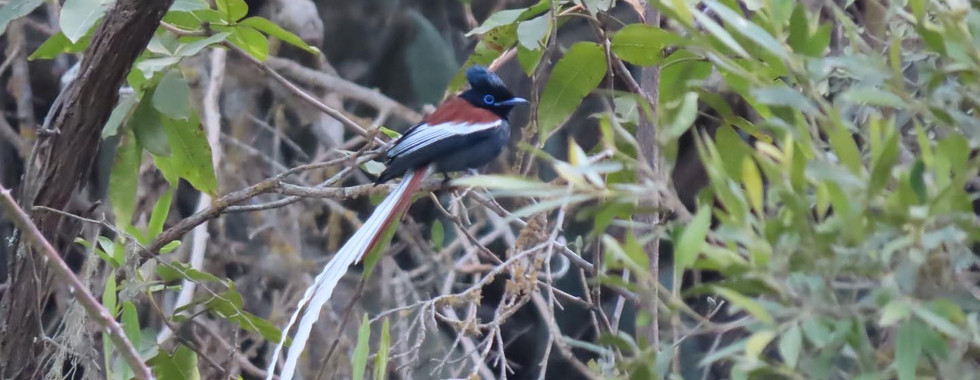





















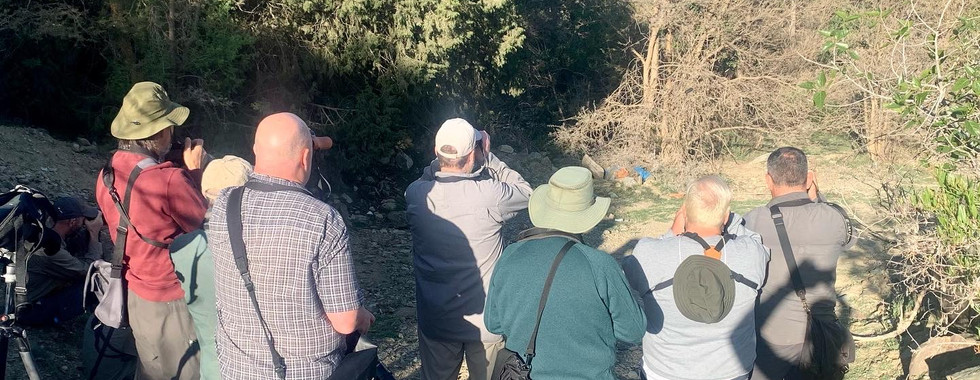









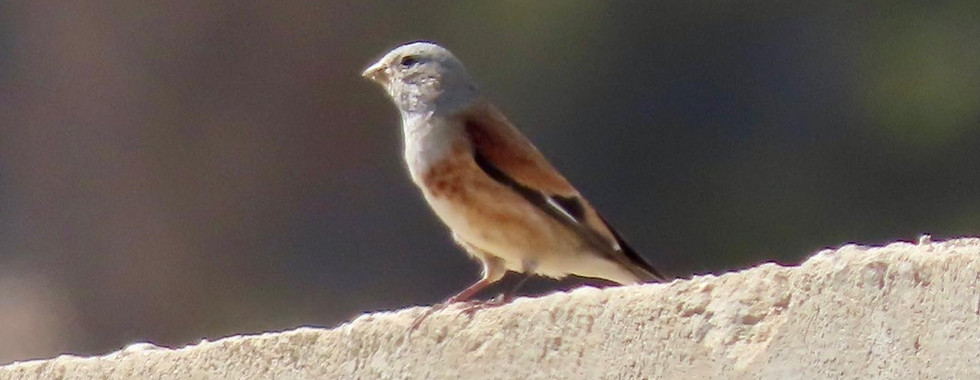



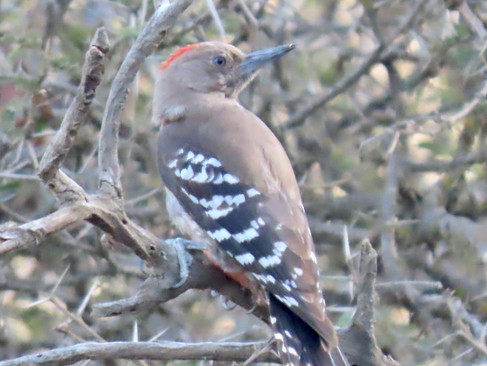

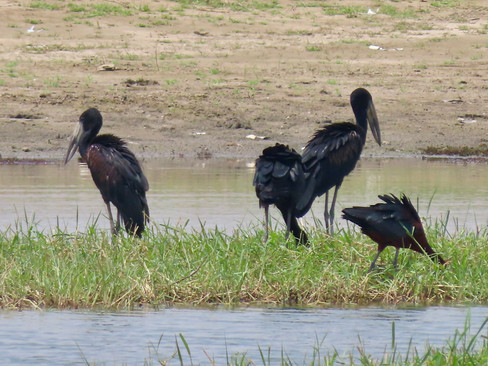



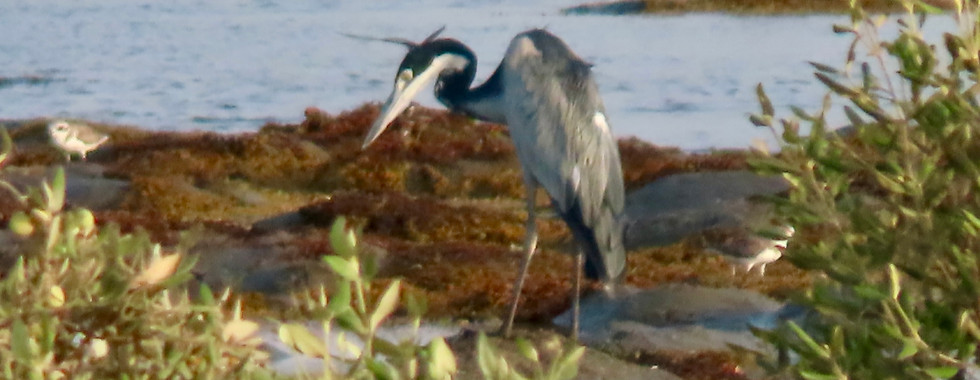



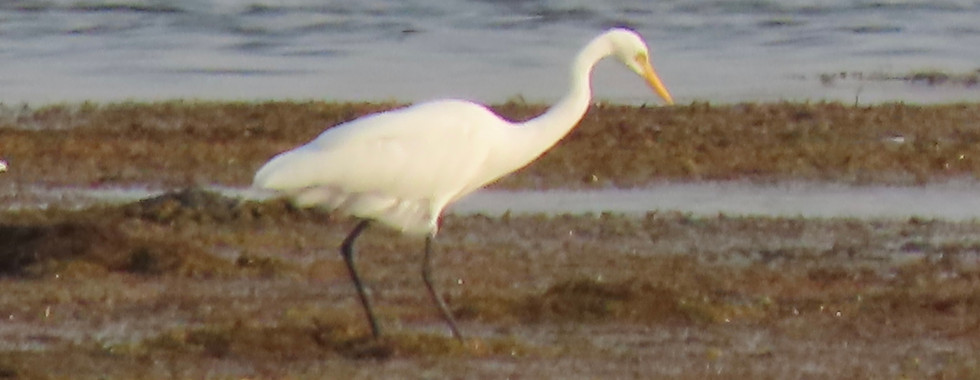

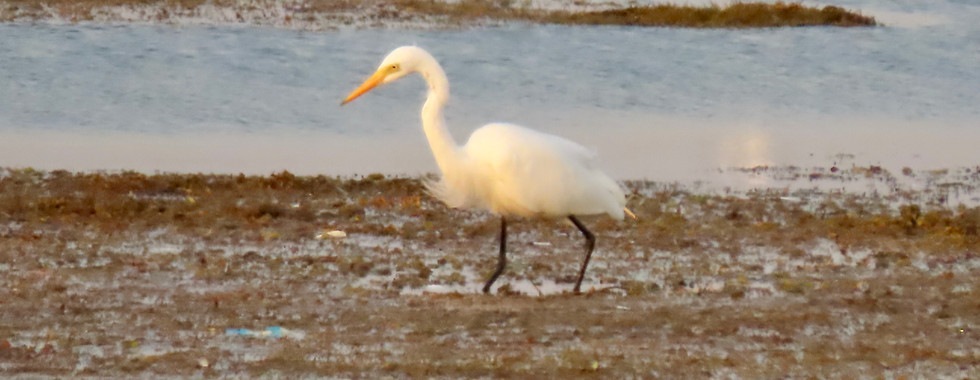



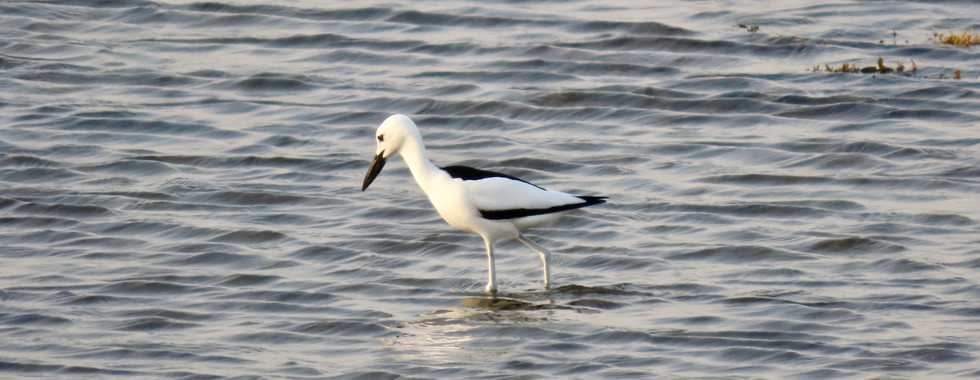




Comments